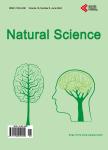Characteristics of termite mounds and associated Acrisols in the coastal savanna zone of Ghana and impact on hydraulic conductivity
Characteristics of termite mounds and associated Acrisols in the coastal savanna zone of Ghana and impact on hydraulic conductivity作者机构:Department of Earth Science University of Ghana Legon Ghana Department of Soil Science School of Agriculture University of Ghana Legon Ghana Natural History Museum Mineralogy Department London SW7 5BD U.K School of Environmental Sciences University of Guelph Guelph Ontario Canada
出 版 物:《Natural Science》 (自然科学期刊(英文))
年 卷 期:2012年第4卷第7期
页 面:423-437页
学科分类:1002[医学-临床医学] 100214[医学-肿瘤学] 10[医学]
主 题:Aggregate Stability Clay Mineralogy Dispersion Ratio Hydraulic Conductivity Mound Morphology Termite Mounds
摘 要:Characteristics of termite mounds and associated Rhodic Acrisol and Haplic Acrisol in the coastal savanna zone of Ghana and their impact on hydraulic conductivity were assessed. The texture of the mounds was sandy clay in contrast to the sandy clay loam of the surface soils. Translocation of fine to medium sized soil materials influenced the relatively higher bulk density (1.60 Mg/m3) and contents of organic carbon, nitrogen and exchangeable bases in the mounds. Kaolinite was the dominant clay mineral with pH values generally below 5.3 in all the soils reflecting the weathered tropical soil environment. Dispersion ratio values, which were 0.5 for the surface soils, indicated greater stability of the mound due to aggregate cementing action by the termites. Estimated mound density was about 120 mounds per ha, which tied in with known groundwater reserves at the study sites. Majority of the mounds exhibited a cone-shaped morphology with heights varying between 3.05-4.00 m in the Rhodic Acrisol and 2.05-4.20 m in the Haplic Acrisol with corresponding estimated total mass of 96,361 kg and 54,910 kg per 1000 m2 land area. These estimates represented a large amount of material relative to the 25,000-26,000 kg of surface soil material within the same unit area. The K in the surface soils ranged from 3.3 x 10-5 to 5.0 x 10-5 m/s while the value for the mound was ≤0.5 x 10-5 m/s. Lower porosity, θ;the effect was more pronounced when the mound was applied on the soil surface. Improvement in water retention and nutrient availability to plants and prevention of leaching to avoid groundwater contamination are some of the positive attributes of this study.



